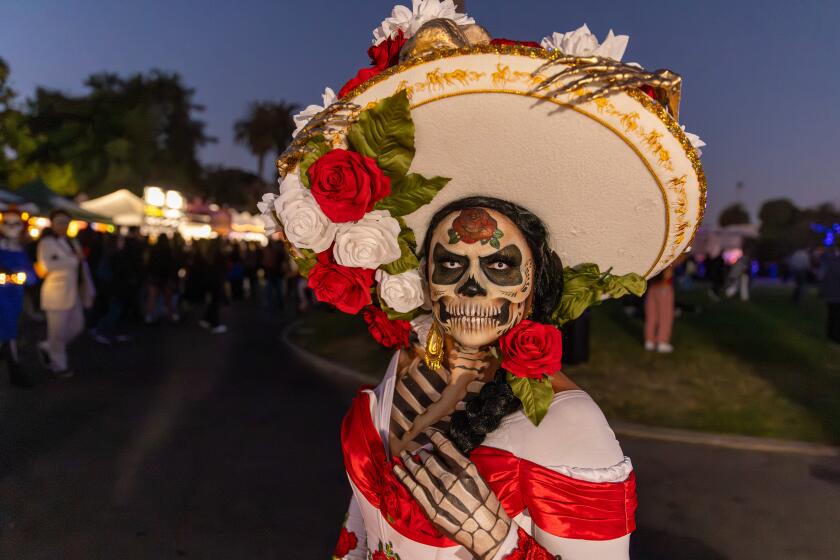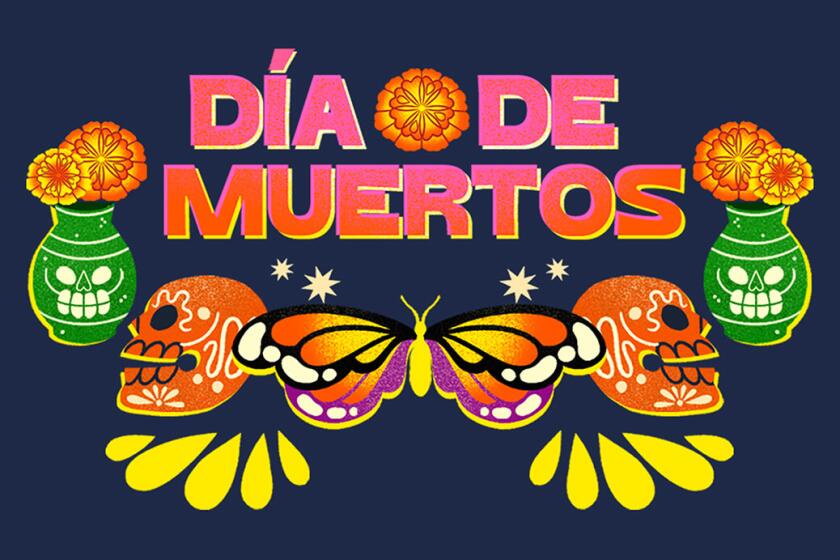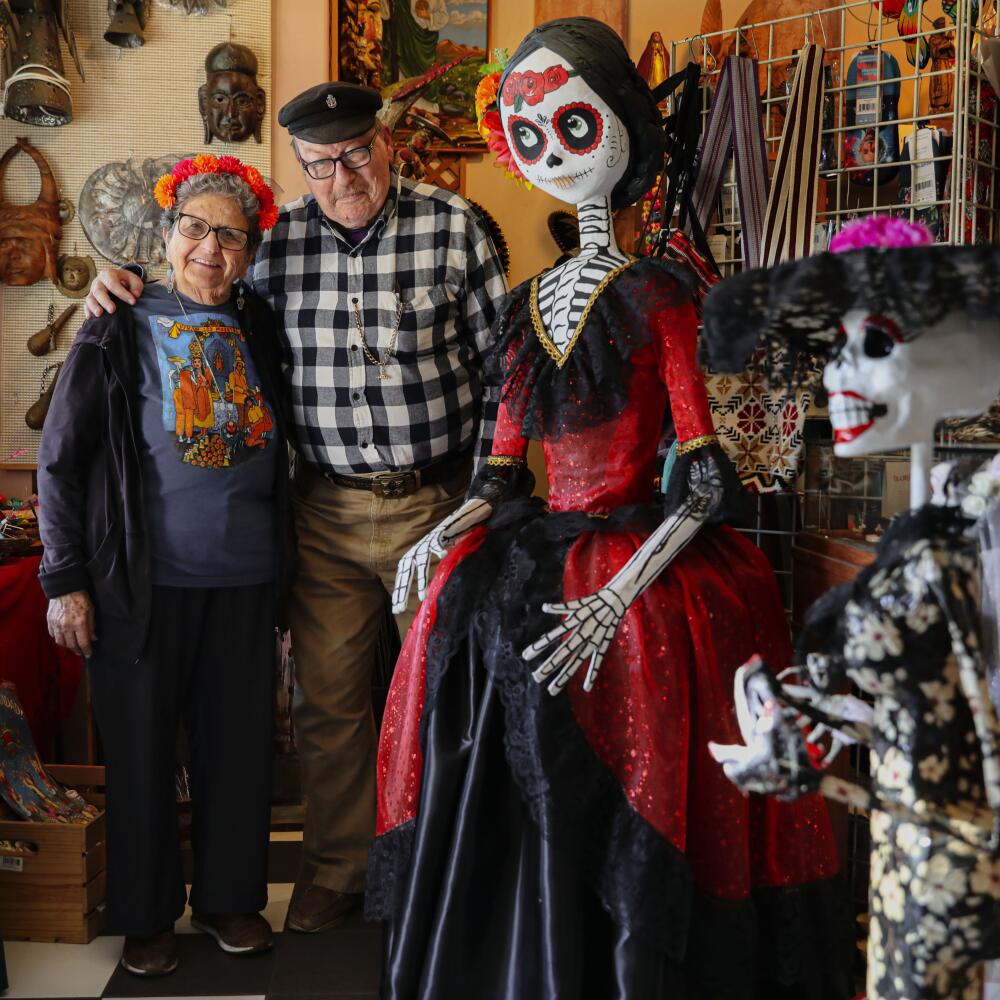
San Diego — Two women scoured through a room full of treasures with bookcases filled to the brim with artisanal crafts. Some structures held baskets with ceramic skulls or calaveras and catrinas. Others had stacks of painted tiles with images of skeletons doing different things: dancing, hugging, laughing or riding horses.
“I have never been able to leave the store without buying anything,” Leonor Ferrer said.
Ferrer and her friend, Edilia Carrillo, were on a hunt for the final touches to add to their altars for Día de Muertos before an altar-making workshop began at Back From Tomboctou. The San Diego-based folk art wholesale company and shop has hosted community workshops for the past 25 years and this year was no different.
Altars, traditional dances and musical performances filled Hollywood Forever Cemetery for the 24th annual Día y Noche De Los Muertos.
Carrillo picked up a small bag of papel picado when Maribel Siman-Delucca — the Salvadoran psychologist who runs the business with her husband, Claudio, a veteran with a background in anthropology and ethnic studies — asked Carillo to join them outside for the workshop.
Forty years ago, the Deluccas launched their business as an effort to raise funds for El Salvador during the Salvadoran civil war. They opened their San Diego retail shop 10 years later and have since established themselves as leaders in importing folk art from around the globe to stores in the country such as Olvera Candle Shop in Los Angeles and the Museum of Latin American Art (MOLAA) gift shop in Long Beach.
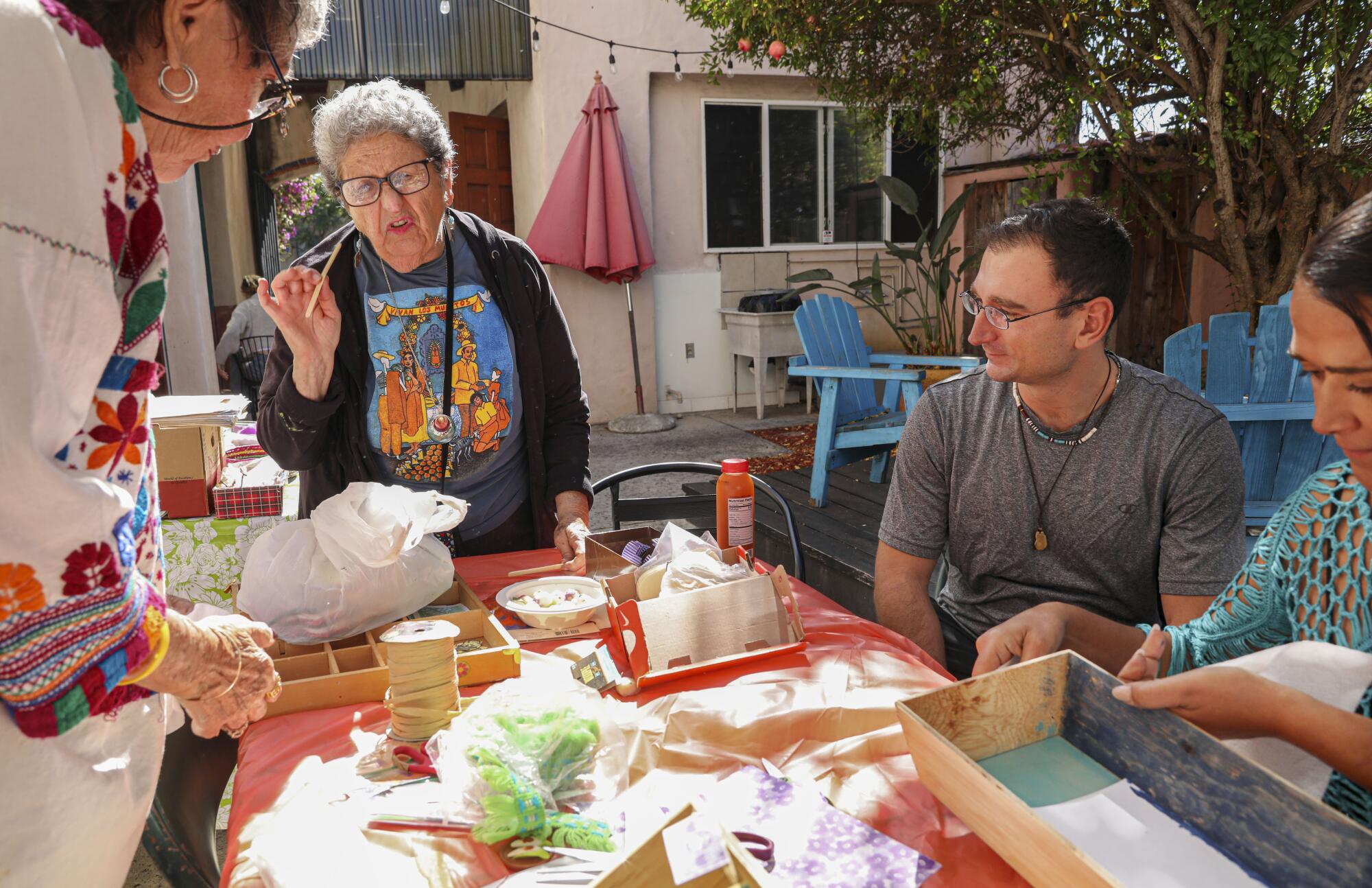
A checkered floor led workshop attendees into the back stockroom, an area with packaged art goods from places like Central America, Mexico, Peru and Indonesia.
On the patio, small wooden boxes that would be transformed into altars sat on a table where Maribel, Carrillo, Ferrer and Ferrer’s daughter, Georgina Kirchhof, were sitting.
During her opening remarks, Maribel recalled people’s reactions to altars and Día de Muertos celebrations before these traditions gained popularity in the United States.
The holiday is an opportunity to spend time with the memories of those who came before us, and celebrate life.
“People would ask, ‘Is this the devil’s work or witchcraft?’” Maribel said. “As the years went by and we began to explain (our traditions), people would relax and identify with the idea of celebrating the lives of their family members or friends in a positive way, which is what we’re going to do today.”
Guests reached into a bin full of paint bottles and paintbrushes and got to work.
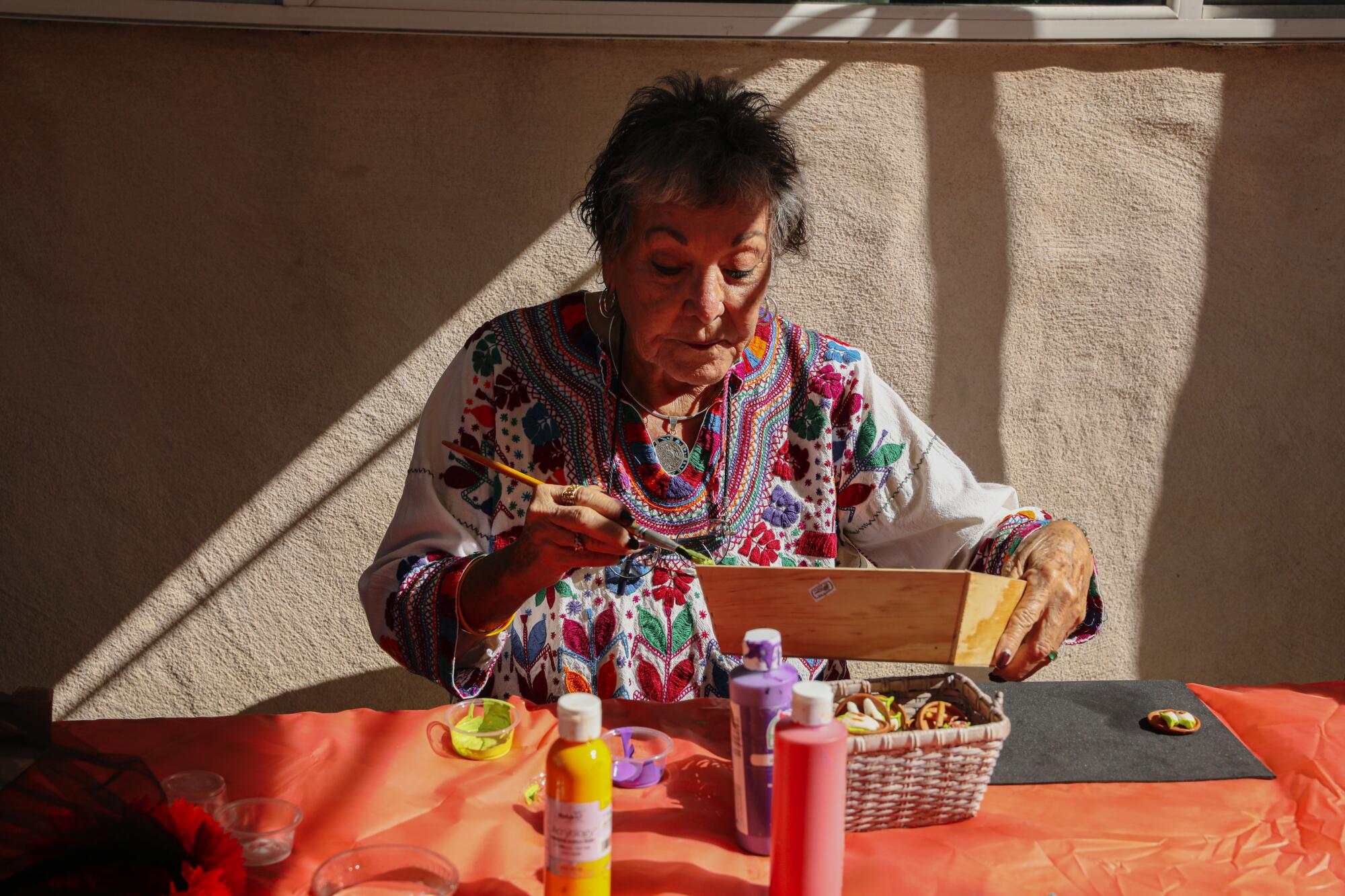
While the paint on the altars dried, the women began gathering items that they would use for their ofrendas or offerings. Miniature sugar skulls, cowboy boots, tamales and other trinkets started to bring back memories of those who have passed on, and the things they enjoyed during their time on Earth.
“(Ofrendas are) a way of saying ‘We still remember you and we still love you,’” Maribel said. “When people die, that’s the first type of death. The second type of death happens when people stop thinking about them.”
On one end of the table, Carrillo’s altar in honor of her late grandmother, Virgina, was coming to life. She remembered growing up with her grandmother in a segregated city in Arizona, where she and other Mexicans had to go to separate schools, movie theaters and other places.
Carrillo gave a tour of her purple-colored altar, which featured a floral background and a table covered by a white cloth with a scalloped trim as an ode to Virginia’s love for sewing.
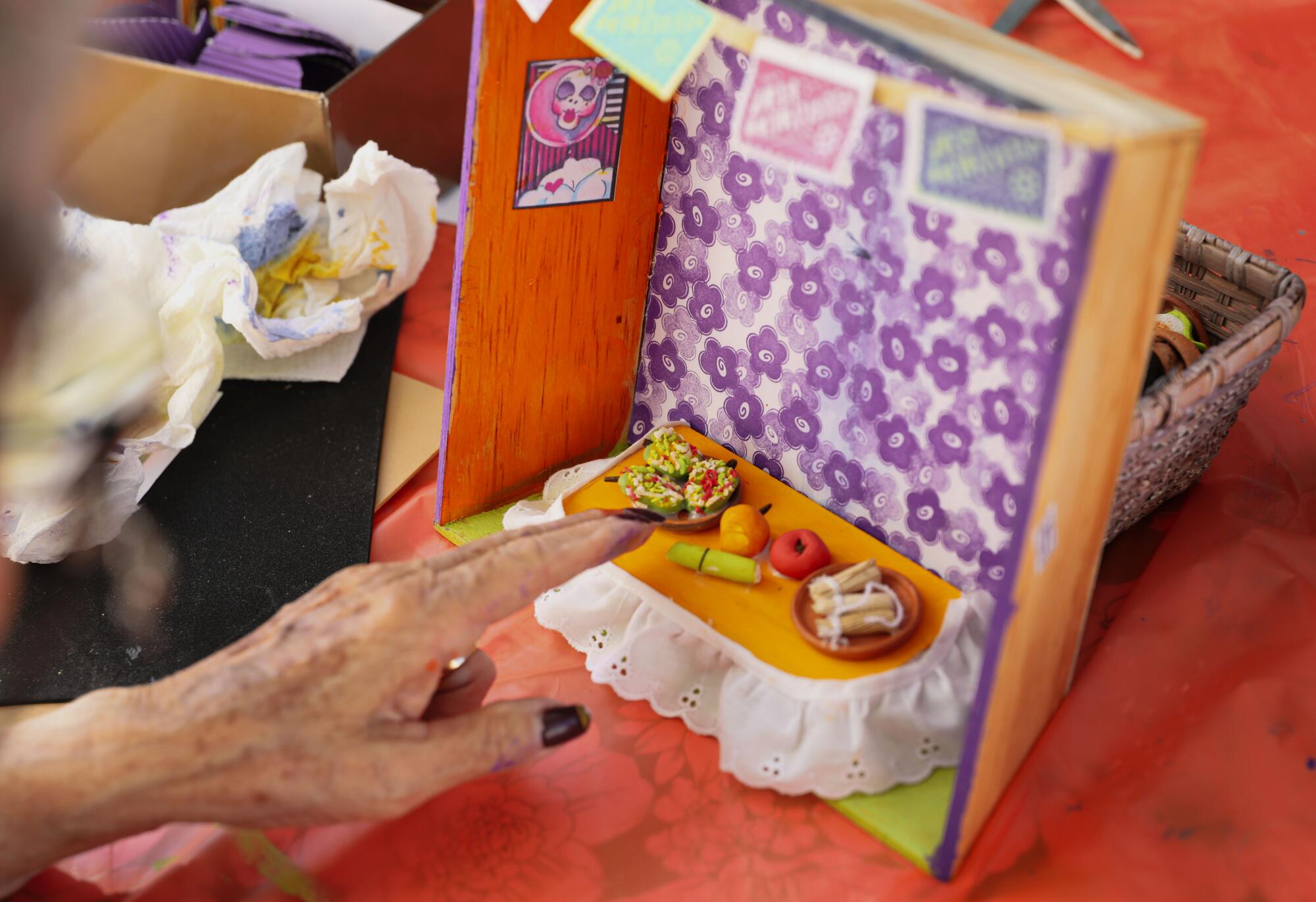
“I would tell (Virginia) that I wish she was still here to tell us about my family’s history,” Carrillo said.
Ferrer’s altar echoed a similar message in dedication to both of her late grandmothers, Teresa and Eloisa, or “Chichi,” which means grandmother in Mayan. Her multicolored creation featured a table with a buffet of Latin American foods: churros with hot chocolate, mamey fruit, chiles rellenos and other dishes reminiscent of Ferrer’s upbringing in Mexico City.
“It’s very important to make these altars as a way of remembering,” Ferrer said as a tear rolled from her eye. “You start remembering who these people were … these people aren’t dead, they exist and they’re still here.”
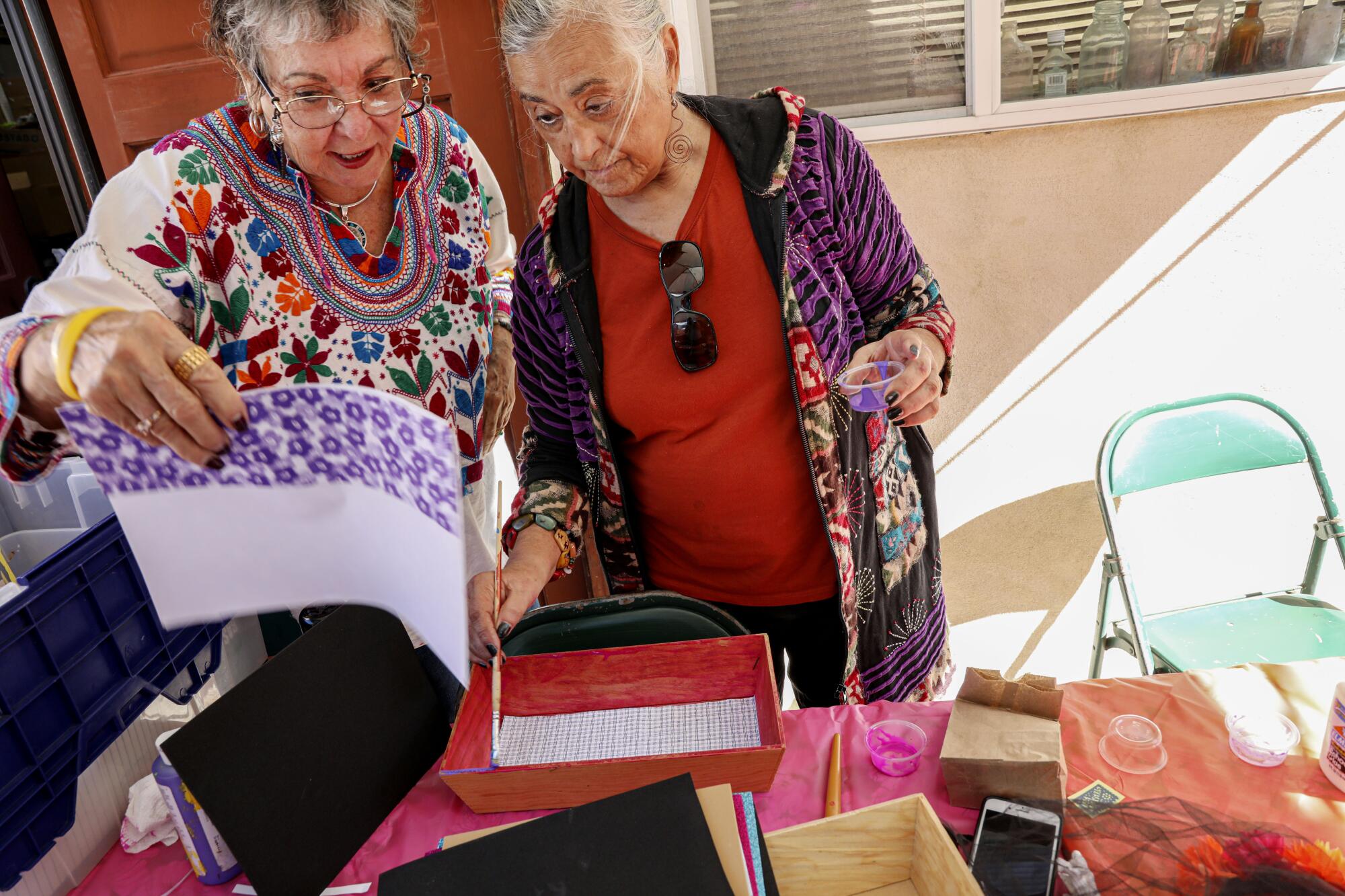
A few feet away from Ferrer’s creation, Kirchhof’s blue altar with small skeleton dogs showed that ofrendas can be made for a different type of departed family member: pets.
“We’re always telling stories about (our pets) or shedding tears, but besides our ancestors, grandmas, tíos and all of that, our animals play a really big part in molding us,” Kirchhof said.
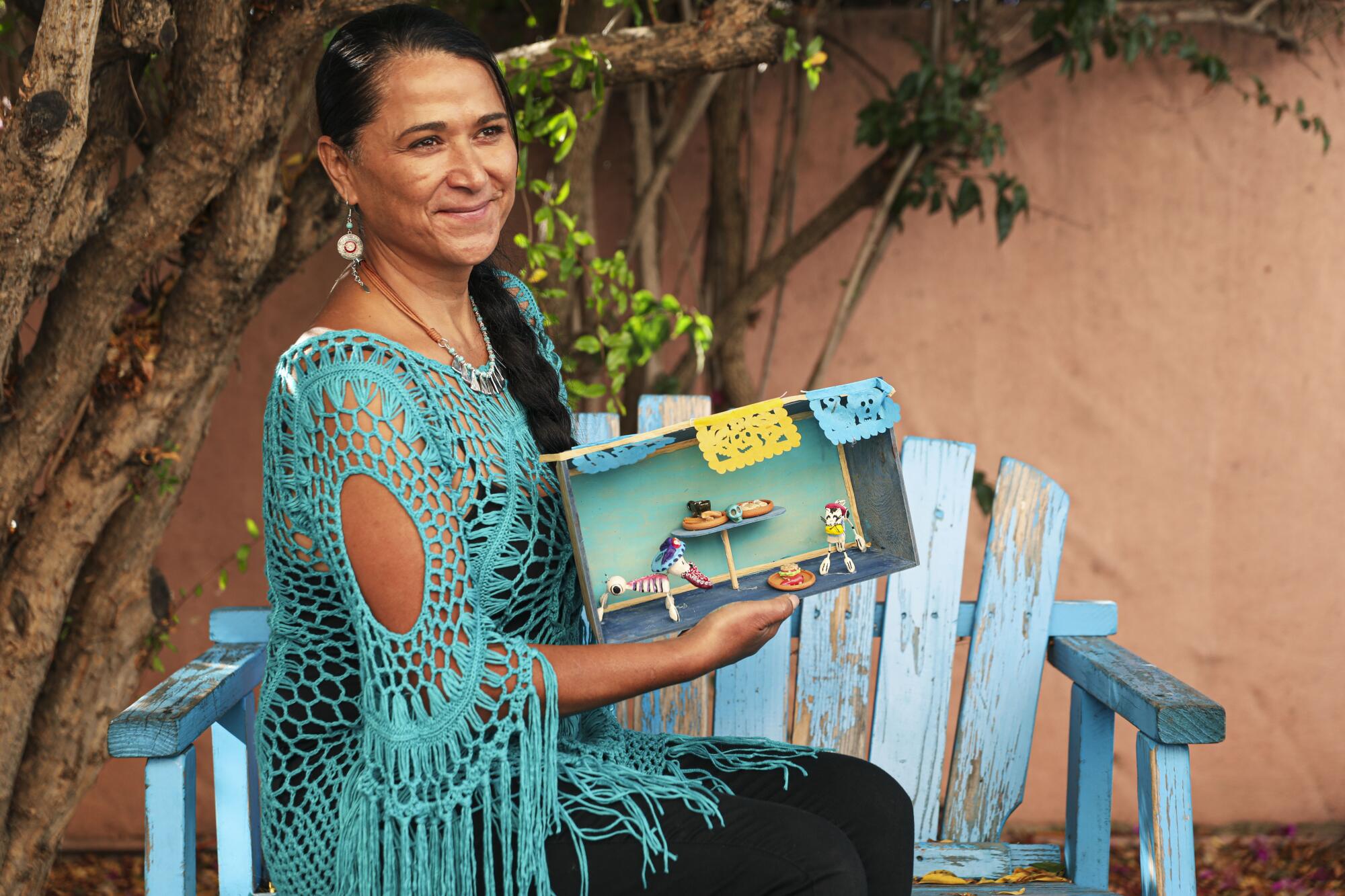
To Kirchhof, altars are a way of remembering who we are as people. “We’re not this moment,” she said. “We are our past and our future.”
Roxana Becerril is an independent Mexican American journalist covering stories spanning lifestyle, travel and Latino verticals. Her work has appeared in the San Diego Union-Tribune, the San Diego Union-Tribune en Español, Eater, San Diego Magazine and others.
More to Read
The Latinx experience chronicled
Get the Latinx Files newsletter for stories that capture the multitudes within our communities.
You may occasionally receive promotional content from the Los Angeles Times.
